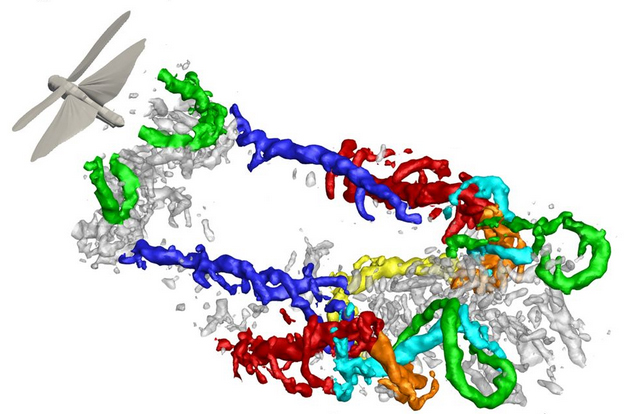Locusts in Flight
Structure and Motion researchers reveal the aerodynamic footprint of locusts in flight in a new article published for Journal of the Royal Society: Interface.
The research was led by Dr Richard Bomphrey, as the RVC worked in collaboration with the Institute of Aerodynamics and Flow Technology and LaVision Gmbh. The team, which also included Dr Toshiyuki Nakata, used state-of-the-art flow visualisation technology, a powerful laser and eight high-speed cameras during wind tunnel testing at DLR in Göttingen, Germany.
Findings revealed how the wake of locust flight changes in time. The study is also a technical achievement in that researchers were able to use tomographic PIV technology to capture the whole footprint of a locust's wake, where previously this has only been achieved in parts. This approach is likely to impact the way future studies measure locomotion through air and water.
The full article, entitled 'The complex aerodynamic footprint of desert locusts revealed by large-volume tomographic particle image velocimetry' can be found at Royal Society publishing.

You may also be interested in:
-
How changing limb posture helped ancient reptiles grow
New collaborative research from the Royal Veterinary College (RVC), along with the Institute of …

